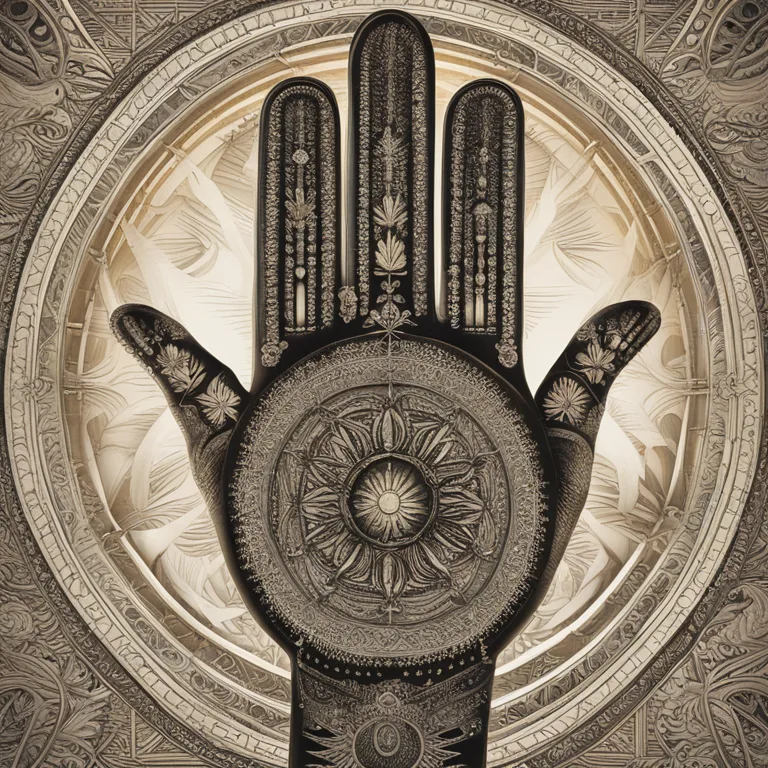
Which Hand to Read in Palmistry: A Guided Insight
Discover the significance of reading the right or left hand in palmistry and learn which hand offers the most personal insights for your life’s path.
article by Nora Pennington
Introduction to Palmistry
Palmistry, or chiromancy, has been a source of curiosity and insight for thousands of years, offering individuals a unique perspective on their lives, characters, and futures. As a practice steeped in history and mystique, one of the most essential questions for both novices and experts is which hand to read for the most accurate revelations. This article aims to shed light on the nuances of palm reading and guides you through the criteria for selecting the appropriate hand.

Right Hand vs. Left Hand
In the realm of palmistry, the significance of the right and left hands is a subject of debate. Traditionally, it is believed that the left hand reveals predispositions and potential, mapping out the traits you're born with. The right hand, meanwhile, is thought to reflect the development and culmination of those traits through one's life experiences. This interplay is crucial in interpreting the lines and markers found on the palms.

Reading for the Dominant Hand
Many practitioners advocate reading the dominant hand—the one you use to write and perform most tasks—as it is considered the 'active' hand, representing the conscious mind. The dominant hand is said to show how you have honed your innate qualities over time. It can provide a dynamic glimpse into the way you deal with the world and the imprint that your environment and decisions have left on your personality.

Understanding the Non-Dominant Hand
Conversely, the non-dominant hand is seen as a reflection of the subconscious, the inherent self, and your latent potentials. Some palmists suggest that this hand carries karmic or hereditary traits and past life experiences that influence your current life's trajectory. This concept is rooted in the idea that the non-dominant hand holds the blueprint of your unaltered persona before external forces come into play.

Gender-Based Traditions in Palmistry
Some schools of palmistry factor in gender when considering which hand to read. It is sometimes recommended that females begin with their left hand and males with their right, regardless of hand dominance, basing this on the theory of masculine (active) and feminine (passive) energies. However, as our understanding of gender evolves, this approach may be re-evaluated by contemporary practitioners to align with a more gender-inclusive perspective.
The Modern Palmist's Approach
In the 21st century, the practice of palmistry is embracing a more individualized approach. The modern palmist may consider a combination of factors—such as the individual's dominant hand, personal concerns, and specific questions when deciding which hand to emphasize during a reading. Tailored approaches can often yield greater depth and relevancy, marking a departure from rigid, one-size-fits-all interpretations.
A Fusion of Ancient Wisdom and Current Practices
Adopting a synthesis of classical teachings with the fluidity of contemporary insights, today's palmistry embraces flexibility. It acknowledges that while certain guidelines exist, the ultimate goal is to provide meaningful readings that resonate with individuals on their unique life paths. Hence, a palmist may read both hands for a holistic view—using the dominant hand to track the evolution of traits and the non-dominant one to explore innate potential.
Published: 1/3/2024
Modified: 1/3/2024
More predictions
Come back here soon to learn more about yourself and your future


Exploring The Secrets of Palmistry
Delve into the ancient art of palmistry and discover how the lines on your hands can mirror the pathways of your life and fate.


The Art Of Palmistry Readings
Delve into the mystical world of palmistry and discover how reading palms can offer insights into your personality and future.


The Mysteries of Palmistry
Delve into the ancient art of palmistry to uncover the secrets held within the lines and features of your hands.